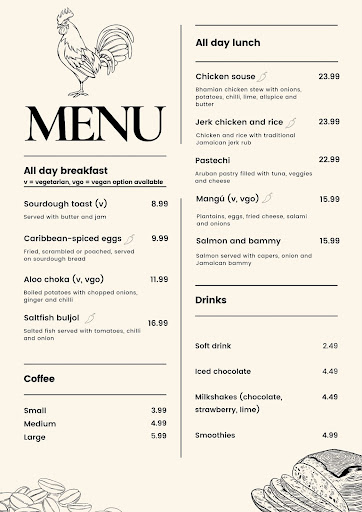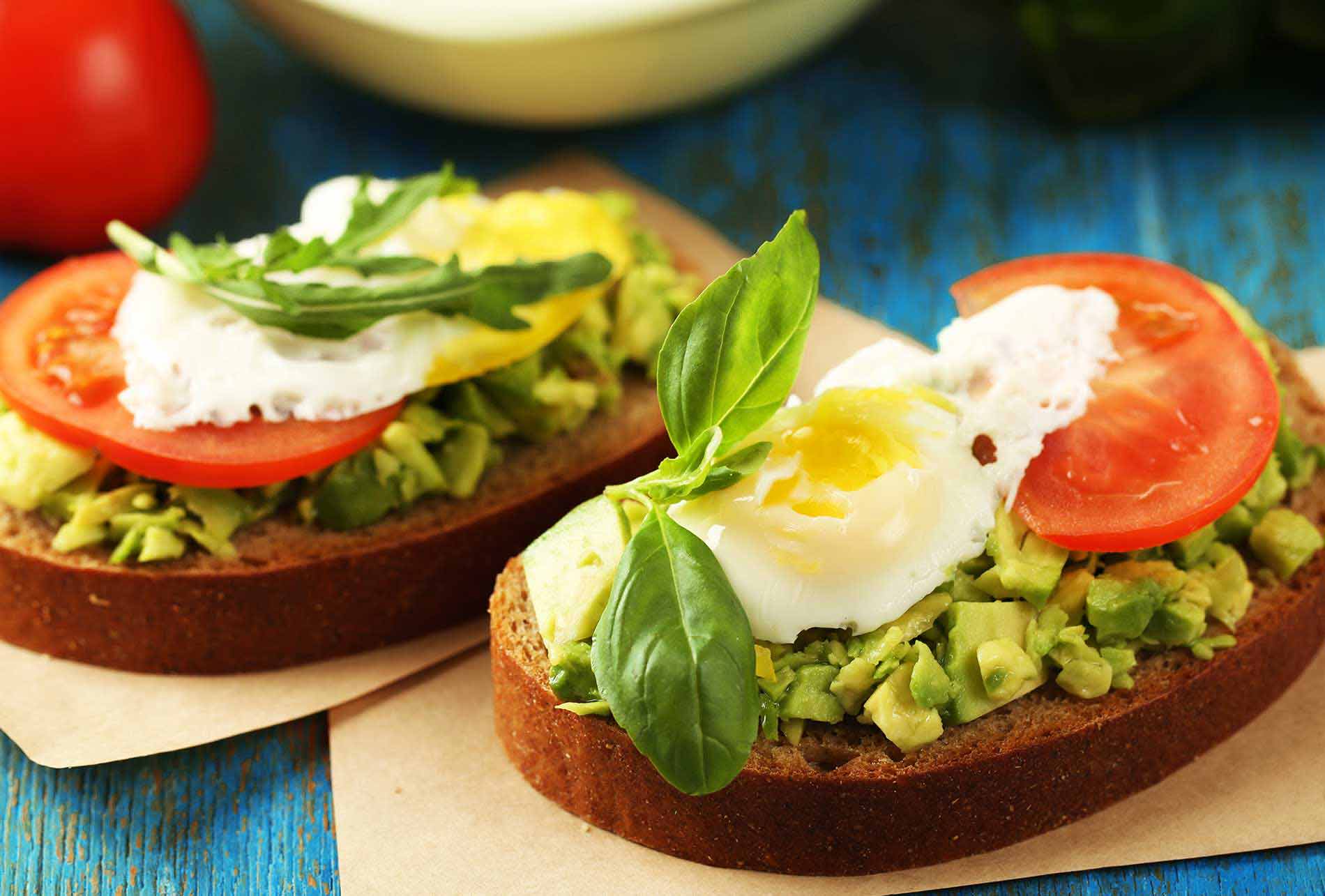Creating a business plan is one of the most essential steps aspiring restaurant owners can take. Forming a new business requires a massive investment of time and money, so it's essential that you enter into any new company with a strong plan in place. They can also be extremely useful when it comes time to seek investment and hire your first employees.
A business plan might feel like a daunting undertaking, but with some guidance, it's simple to construct an in-depth analysis that will set up your business for success.
What is a Business Plan?
A business plan is a document that lays out the key elements of your business concept, an analysis of the general market and some financial projections for your business. It should be a master document you use to align your thoughts and perform research.
A restaurant business plan should include the following elements:
- Executive summary
- Mission statement
- Company description
- Ideal diner experience
- Sample menu
- Location analysis
- Employees
- Marketing strategy
- Financial projections
Why Is a Restaurant Business Plan Important?
A restaurant business plan allows you to enter into your new venture with a clear image of your business, its finances and its surrounding market. You will be investing your own time and money into your new restaurant, so taking the time to build out a strong business plan is essential to giving yourself the best possible chance of success.
A comprehensive restaurant business plan is crucial when it comes time to involve other individuals in setting up your business – that includes investors, building managers and prospective employees.
All business plans should be tailored for the industry in question. In the case of hospitality, the diner is always central. You must constantly reflect on this fact throughout your business plan. Tie the experience and satisfaction of your diners into your plan as much as possible.
When to Write a Restaurant Business Plan
You should begin the process of creating a new restaurant business with a SWOT analysis. This will help you identify the initial strengths and weaknesses of your business, and the opportunities and threats presented by the broader market.
After your SWOT analysis, it's time to create a mission statement. A mission statement should synthesise the core elements of your business into 1-3 sentences – why is your business destined for success, and why should potential investors, employees and customers be excited about it?
Once you've completed a SWOT analysis and mission statement, you're ready to begin the more extensive process of creating a fully-fledged business plan.
What Goes Into a Restaurant Business Plan?
A business plan can take on different forms and include a variety of sections. These are the core elements of your business plan that potential investors and building managers will expect to find.
Also included are brief, general examples of what each section should consist of – keep in mind that your final restaurant business plan should be a good deal more elaborate than the examples given below.
Executive Summary
Executive summaries are common in all business documents. They serve not only as an introduction to the plan but as an overall summary. The reader should be able to glance at your executive summary and come away with the core insights of the plan.
Your executive summary should touch on the restaurant concept, points of difference and return on investment (ROI).
Executive Summary Example
The Daily Grind is a 30-seat café that will focus on delivering delicious food and coffee with a Caribbean influence.
A well-trained team of chefs and a stunning menu will ensure The Daily Grind is known as one of the top restaurants in the area.
A great location and strong economic climate have led us to forecast a 15% return on investment per annum.
Mission Statement
A mission statement is an extremely brief rundown of what your business is bringing to the market. Why have you created this business? What do you hope it will provide to the community?
Readers should walk away from your mission statement feeling excited about your business, and with a strong understanding of what sets it apart from the crowd and the value it will provide.
Mission Statement Example
To provide the ultimate café experience for everyone, from commuters looking to grab their morning coffee to foodies wanting to spend their morning enjoying a delicious meal.
Company Description
Your company description should cover some of your fundamental business information in rapid-fire fashion.
Some of the key points you should include are:
- Location
- Owner's details, including contact details
- Background
- Long and short-term goals
- Brief market overview
Company Description Example
The Daily Grind will be a proprietary limited company owned and operated by Jonathan Cooper.
We will distinguish ourselves with an excellent staff of chefs who are well-trained in Caribbean cuisine. Our overhead costs will slightly exceed the industry averages, but we believe the premium experience our café offers will lead to significant growth within our first 3 years of operation.
Ideal Diner Experience
What kind of journey do you want your customers to have in your venue? How will your restaurant ensure it attends to the needs and desires of its diners? This section of your restaurant business plan must tackle these questions. Let your reader know how you will make sure every customer leaves your restaurant with a smile on their face.
Ideal Diner Experience Example
The ideal diner experience for The Daily Grind is one where customers enjoy exquisite customer service and receive their order in a prompt manner. Their food and beverages must always be up to the highest standard. They should feel they have received an authentic taste of Caribbean cuisine.
Whether they are a rushing commuter or a diner looking for an excellent sit-down experience, all customers should feel their needs have been met and exceeded at The Daily Grind.
Sample Menu
At the core of any restaurant is its menu. Whatever stage your menu is at, give your reader an idea of the dishes your restaurant will serve. Include the culinary stylings of your restaurant, and how it will account for various dietary requirements. Your sample menu is also a great time to let readers in on your pricing models.
Sample Menu Example
The Daily Grind seeks to merge Australian café culture with Caribbean cuisine. We will offer options for vegetarian and vegan diners. Below is a sample menu to be used upon the opening of the restaurant.

Location Analysis
Describe the proposed location for your venue. This section can be brief if your business is still in its early stages. If you're further along, include more detail about the design, parking and your floor plan.
Location Analysis Example
The Daily Grind will be located in the Sydney suburb of Marrickville. Our ideal tenancy will have ample space for a full-service kitchen area, a large dining room as well as outdoor seating. The perfect location will be near one of the public or private car parks in Marrickville.
Market Overview
This section presents the research you've gathered about the general market and your target market. This should include top-level analysis regarding the global economy and more specific details regarding the area your restaurant will be located in. Then, explain how your business idea will seize upon opportunities presented by the market.
Market Overview Example
Marrickville and Sydney are home to an extremely strong café culture. Some estimates place the number of independent cafés in Sydney at 7,000. It is an extremely competitive market, which is why The Daily Grind will place emphasis on its Caribbean culinary influence and high-quality service as a point of difference from other cafés in the area.
High-end singles, couples, tourists and corporate workers will serve as our primary target markets, based on the demographics of the area.
Australia is currently being affected by extremely high levels of inflation, reaching a headline level of 7.8% in December 2022. While The Daily Grind will offer a premium dining experience, any cost-cutting measures that can be taken will be instrumental in empowering customers to spend money with us.
Marketing Strategy
Marketing is essential for any business. In this section of your plan, you must explain the tactics your business will use to grow and stay in people's minds.
Your marketing strategy goes hand-in-hand with your market overview, so be sure to call back to your findings from the previous section.
Marketing Strategy Example
The Daily Grind will utilise a 3-pronged marketing approach to spread the word of our establishment and ensure it remains top-of-mind in a highly competitive scene.
The 3 pillars of our marketing strategy will be:
- Word-of-mouth
- Social media
- Search engine optimisation (SEO)
The Daily Grind will encourage positive word-of-mouth by providing an excellent experience for customers with delicious food and strong customer service. We will emphasise the local nature of our business by advertising partnerships with nearby suppliers. This will encourage customers to support a local business by letting their friends and loved ones know about it.
We will create social media accounts across platforms like Facebook, Instagram and TikTok with regular updates about the business. We will create specific hashtags for our restaurant and will encourage customers to share their experience at our venue in various ways. Budget has been set aside for partnerships with local influencers.
Search engine optimisation is hugely important for our café considering how frequently consumers turn to Google for help finding local dining spots. We will create an optimised Google My Business profile and follow core SEO principles to ensure customers have a great chance to discover The Daily Grind.
Employees
In this section, outline any staff members you have already got on board to work in your restaurant. Provide some general information about each, demonstrating why they will be an asset to your business. You can also use this section to provide a brief framework of other roles that will arise in your organisation.
Employees Example
The Daily Grind has already attained a team of staff who will prove to be instrumental in its success.
- Jonathon Cooper – Owner, general manager. 13 years of experience in hospitality management.
- Corey McCarthy – Head chef. 15 years of experience as a professional chef.
- Jemma Tyler – Sous chef. 6 years of experience as a professional chef.
- Uma Richards – Barista. 7 years experience in hospitality.
We envision 3 more part-time roles to be open in The Daily Grind's kitchen, and 6 more part-time and casual roles to be open for floor staff.
Financial Analysis
Since the target audience for your restaurant business plan is likely to be potential investors, this section of your plan is extremely important for letting them know specifically what you require to get your business off the ground.
Unless you have extensive financial education or training, you should get professional assistance in formulating this section of your plan. Any potential investor will be extremely financially literate, and they will be unimpressed if this section of your plan is not.
Financial Analysis Example
We are seeking $500,000 of investment to establish The Daily Grind.
This money will be spent on:
- Furniture
- Kitchen equipment
- Rent
- Staff wages
- Establishing a food and beverage inventory
- POS system
- Business registration costs
After 1 year spent establishing the business, we believe The Daily Grind can begin to turn significant profits in years 2, 3 and beyond.
Tools for Creating a Restaurant Business Plan
A restaurant business plan is a very significant undertaking. Fortunately, there are a wide array of tools available which you can use to help create one for your business.
- Canva – Canva has revolutionised the world of graphic design. It is now used by professionals across a wide array of industries. It's a great option to easily make your content look amazing no matter your skill set. If you're concerned about your business plan appearing bland or boring, be sure to have a go at creating unique graphics in Canva.
- Government websites – Naturally, the government has a vested interest in ensuring that businesses throughout Australia continue to grow and thrive. The official Australian government Business website includes tips and templates for creating a business plan you can utilise.
- All-in-one tools – There are an array of all-in-one business plan creation tools to take advantage of. These services include snazzy features like templates, automated financial forecasts and slideshow integration. Some of the most popular all-in-one business plan tools are Enloop, IdeaBuddy and TheBizPlanner.
Optimise Your Business With ResDiary
Once your business plan is in place, you'll be fully aware of what a major undertaking your new restaurant is. Let ResDiary help you out from the very beginning of your business.
ResDiary offers excellent table management functionality, a range of features to help you accept bookings more easily, and over 60 integrations to simply everything from EPOS to property management for hotels.
Book a personalised demo today to put your business plan into action.

.png?width=660&height=370&name=660x370(2).png)


